Tapir Challenge, Part 2
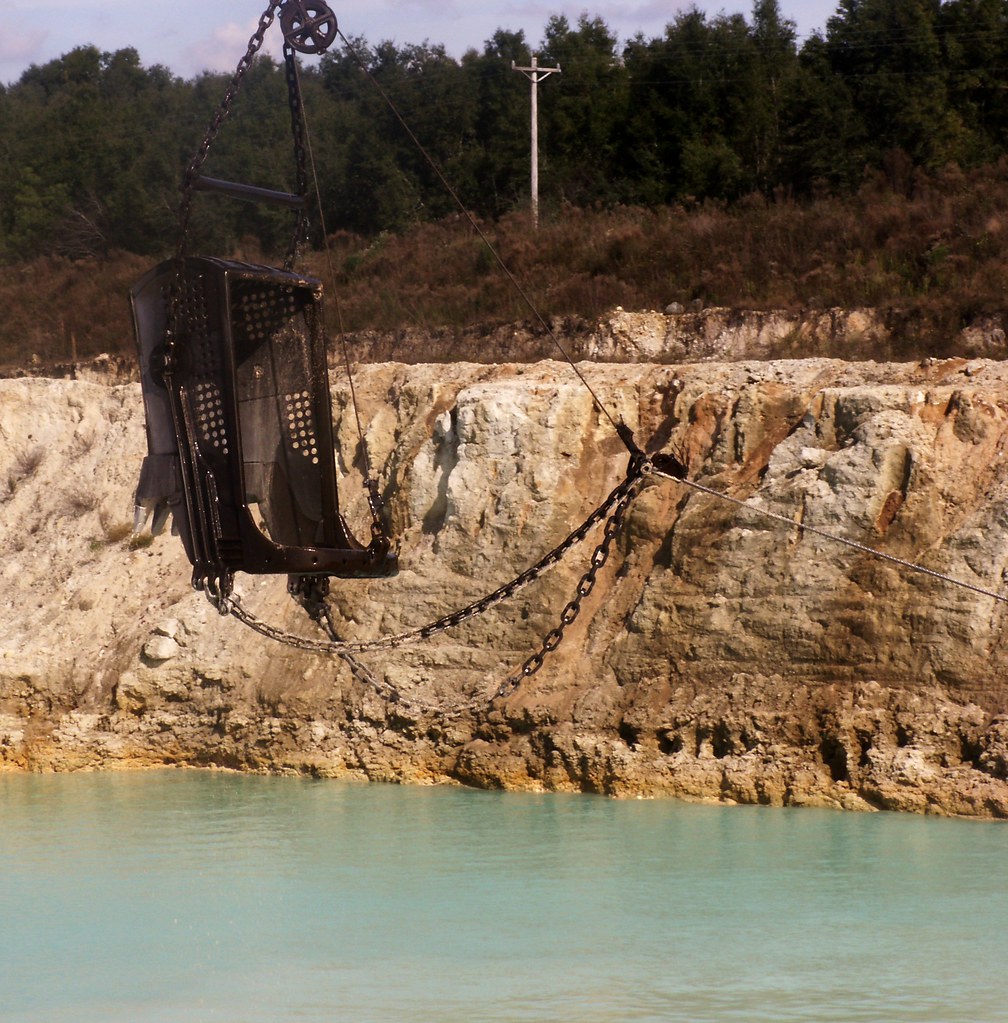
This quarry is home of the Haile 7G fossil dig site and the Florida Museum of Natural History's "Tapir Challenge." More information is on the museum's website.
Thanks to a sinkhole and a collapsed limestone wall, a vertebrate paleontologist had spotted limb bones through cracks in the dried clay....
Dredging for limestone (1:32):
Regular dredging work went on while we dug for fossils. The water seen here is part of the Florida aquifer.
First the work crew drills holes along the edge. Into the holes they stick 20-foot tubes packed with explosives and blow the limestone into the water. A drag line scoops the limestone into a pile, which is then left for a week to let water drain. Rock crushers arrive to make all the limestone a uniform size. Dump trucks follow to gather the limestone and haul it out. Eventually this site will be dug out all the way around.
The limestone -- the bedrock of this state -- is used to build roads and is also made into cement at a plant down the road. Said our instructor, "You're looking at the real Florida."
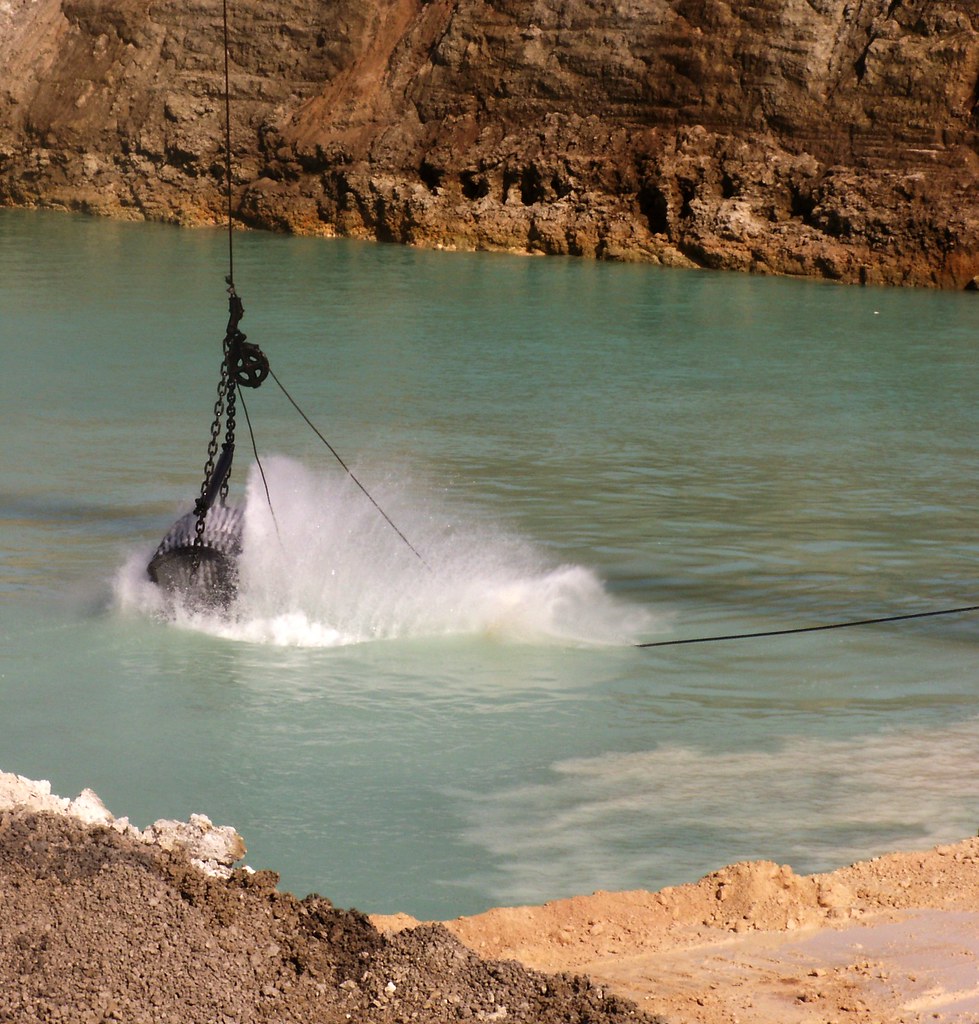
I have yet to visit the Florida Museum of Natural History in Gainesville -- I have yet to visit Gainesville, period. In a corner of the museum stands a giant ground sloth, whose skeleton was found on the other side of trees bordering our site. That area has now been mined out. When the current site was discovered its fossils were the same age as the sloth. Fortunately, the mine operators allowed the dig to be established on the property.
Mine operators want pure limestone: no sand, no clay. They test to see if an area has been eroded away and contains sinkholes. If it does, they try to leave a limestone wall in place to hold the sinkhole back. In the case of the Haile 7G site, the mine operators had made too close a cut. The limestone wall gave way and slumped.
An invertebrate-fossil collector from the museum frequents the mine, looking for new shells. When he saw the slumped wall he informed the museum's vertebrate-fossil collectors. In dry weather clay contracts and forms cracks. Through one of these cracks a vertebrate-fossil collector spotted limb bones, a finding that led to the discovery of three sloth skeletons that day.
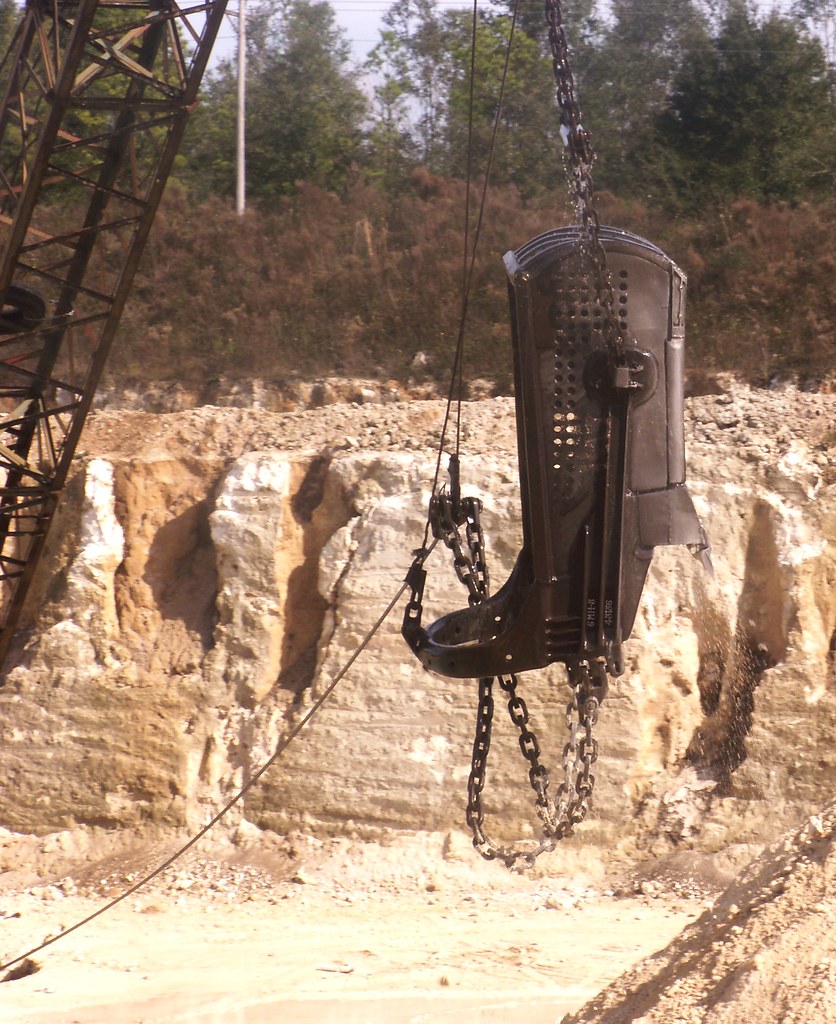
Time was short at first, placing the museum in "salvage mode": get the bones out as best you can. The museum built a sand bag stairway to work the lower level. When I looked down from the upper level I saw a tarp down below and was told that turtle remains were underneath it. When the mine manager gave the museum more time, the upper level of the dig was established, yielding the same types of fossils.
Florida is the richest state east of the Mississippi for vertebrate fossils. Most sites yield up isolated bones. What makes this site unique is that its skeletons are for the most part articulated, consisting of arms, legs, head, etc., found together rather than as scattered bones. That's the upside. The downside is that the spaces between the skeletons usually don't contain anything.
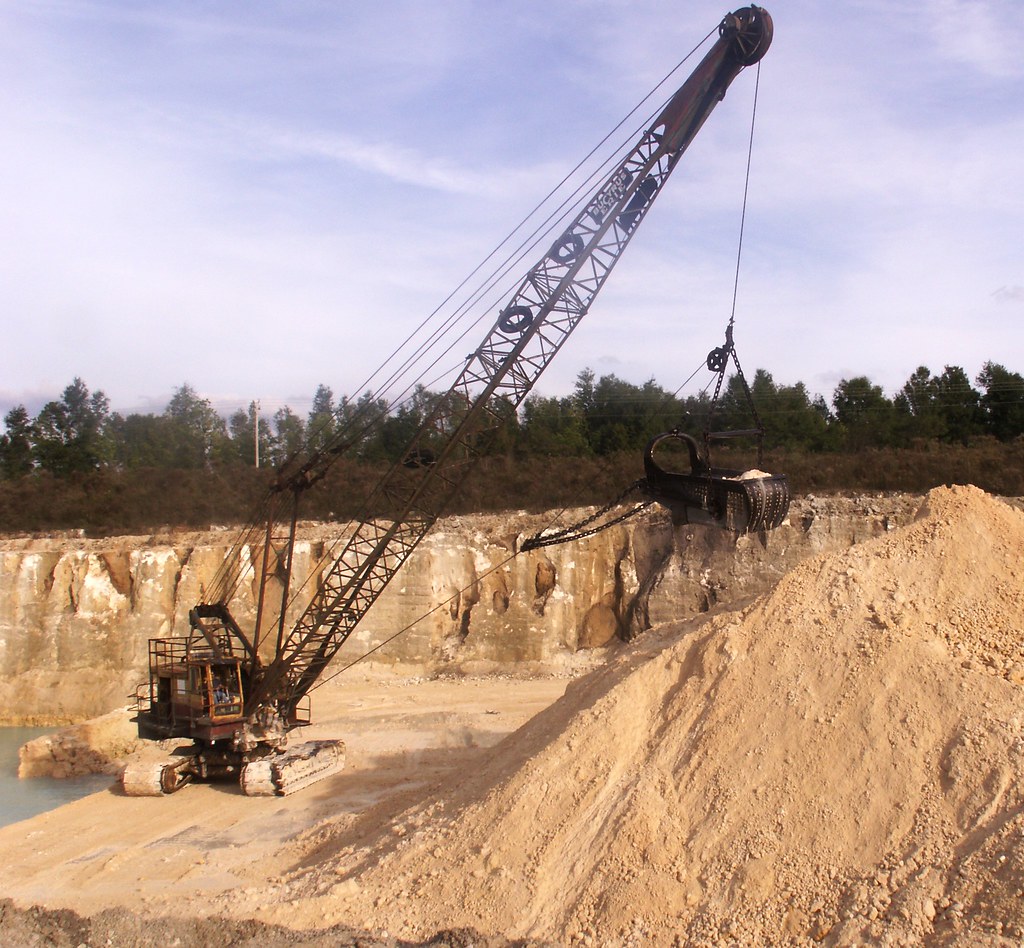
The presence of so many tapir skeletons is another mystery. As of December 5, the day before my time at the dig, the 42nd tapir skeleton was retrieved. Tapirs are solitary animals not found in packs. The only other site with a large collection of tapir skeletons is in Tennessee: the impetus for the "Tapir Challenge."
The Tennessee site was found by a road department highway crew. The state's governor got involved, going so far as to have the highway shifted. Tennessee then invested in developing the site and constructing a building over it, providing year-round access for fossil collectors and the location for a museum.
In contrast, Florida has no state funding and runs mainly on contributions. Said our instructor, "We're holding our own."
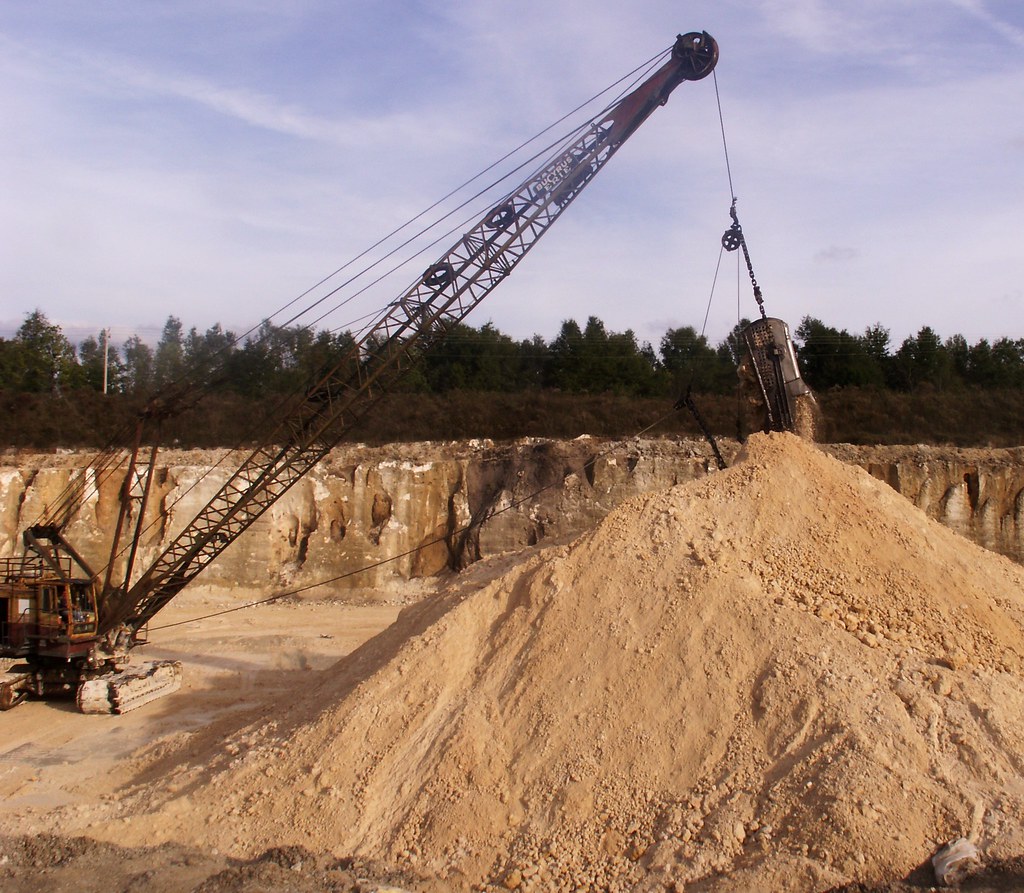
"Holding one's own" took on new meaning when we learned that the porta-potty had been removed on Friday and not replaced. After setting us up, our instructor stepped aside to call the university. Before long a sparkling clean facility was delivered, still glistening with wash water.
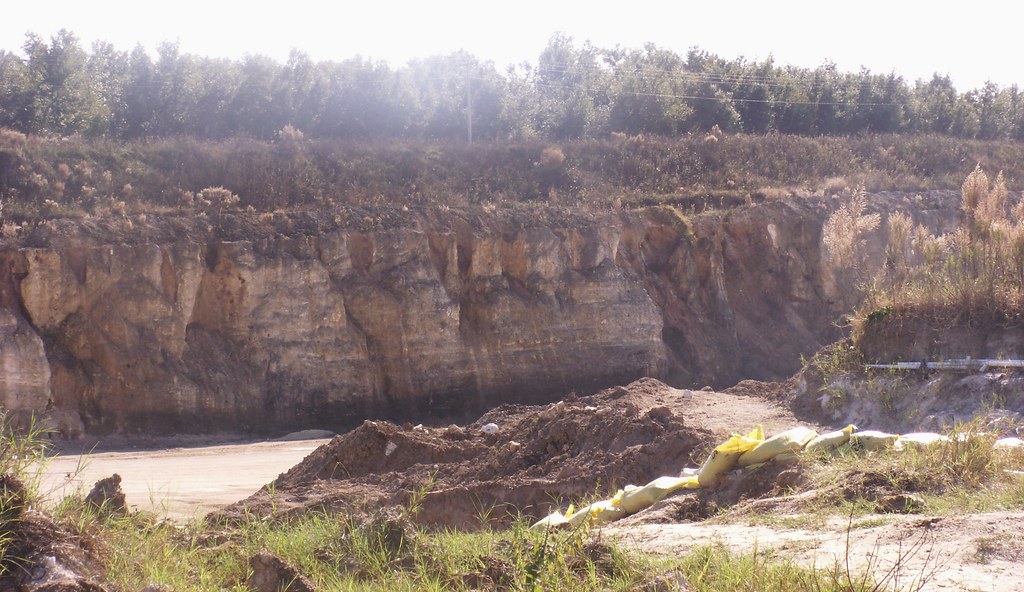
Part of the dig site is at lower right, indicated by sandbags. Coming up: The dig site itself.











0 Comments:
Post a Comment
<< Home